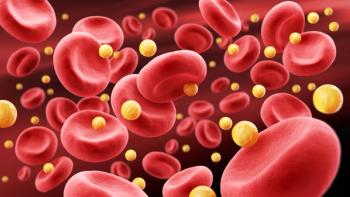
Monday Pharmaceutical Mystery: March 23
Why is your patient using conjugated estrogens vaginal cream for nosebleeds?
Your regular patient presents to the pharmacy, tissue in hand. She hands you a prescription from her ENT doctor. The prescription is for conjugated estrogens (Premarin) vaginal cream, and the directions are: apply as directed in each nare.
You are immediately puzzled, and after quickly double checking the package insert for indications, ask the patient, “did the doctor tell you what you are using this for?” After all, you have certainly never seen conjugated estrogens vaginal cream prescribed by an ENT for use in the nose.
Mystery: Why is your patient using conjugated estrogens vaginal cream in her nose?
Solution: The Premarin package insert specifies that the only indication for the product is for the treatment of atrophic vaginitis and kraurosis vulvae.1 However, this patient's issue is nosebleeds.
Nosebleeds, also known as epistaxis, are categorized as frequent if they occur more than once a week. They are most commonly caused by dry air or nose picking, but can also be caused by many other conditions such as allergies, sinus infection, chemical irritants, and blood thinners, to name a few. Some tips to prevent nosebleeds include: keeping children’s’ fingernails short, using a humidifier, and keeping nasal passages moist with a light coat of Vaseline or antibiotic ointment applied with a cotton swab several times a day.2
In a guide called Nosebleeds by hemophilia.org, treatment options are outlined. These options include a variety of products. Locally applied hemostatic products help clot formation and prevent breakdown of clots, including estrogen cream in the nostrils.3
There is anecdotal data about the use of estradiol or estriol used in the nose, such as a study in Haemophilia, where a small group of patients with bleeding disorders was prescribed estrogen cream to use in the nose. The patients that were compliant with treatment reported both less frequent and less severe nosebleeds. 4
REFERENCES
- FDA package insert: Premarin (conjugated estrogens) Vaginal Cream in a nonliquefying base. https://www.accessdata.fda.gov/drugsatfda_docs/label/2008/020216s059lbl.pdf Accessed February 29, 2020.
- Mayo Clinic. Nosebleeds. https://www.mayoclinic.org/symptoms/nosebleeds/basics/when-to-see-doctor/sym-20050914 Accessed February 29, 2020.
- Hemophilia.org. Nosebleeds. https://www.hemophilia.org/sites/default/files/document/files/Nosebleeds.pdf Accessed February 29, 2020.
- Rodriguez, V, et al. Intranasal oestrogen cream for the prevention of epistaxis in patients with bleeding disorders. https://www.academia.edu/26347206/Intranasal_oestrogen_cream_for_the_prevention_of_epistaxis_in_patients_with_bleeding_disorders Accessed February 29, 2020.
Newsletter
Stay informed on drug updates, treatment guidelines, and pharmacy practice trends—subscribe to Pharmacy Times for weekly clinical insights.


















































































































































































































